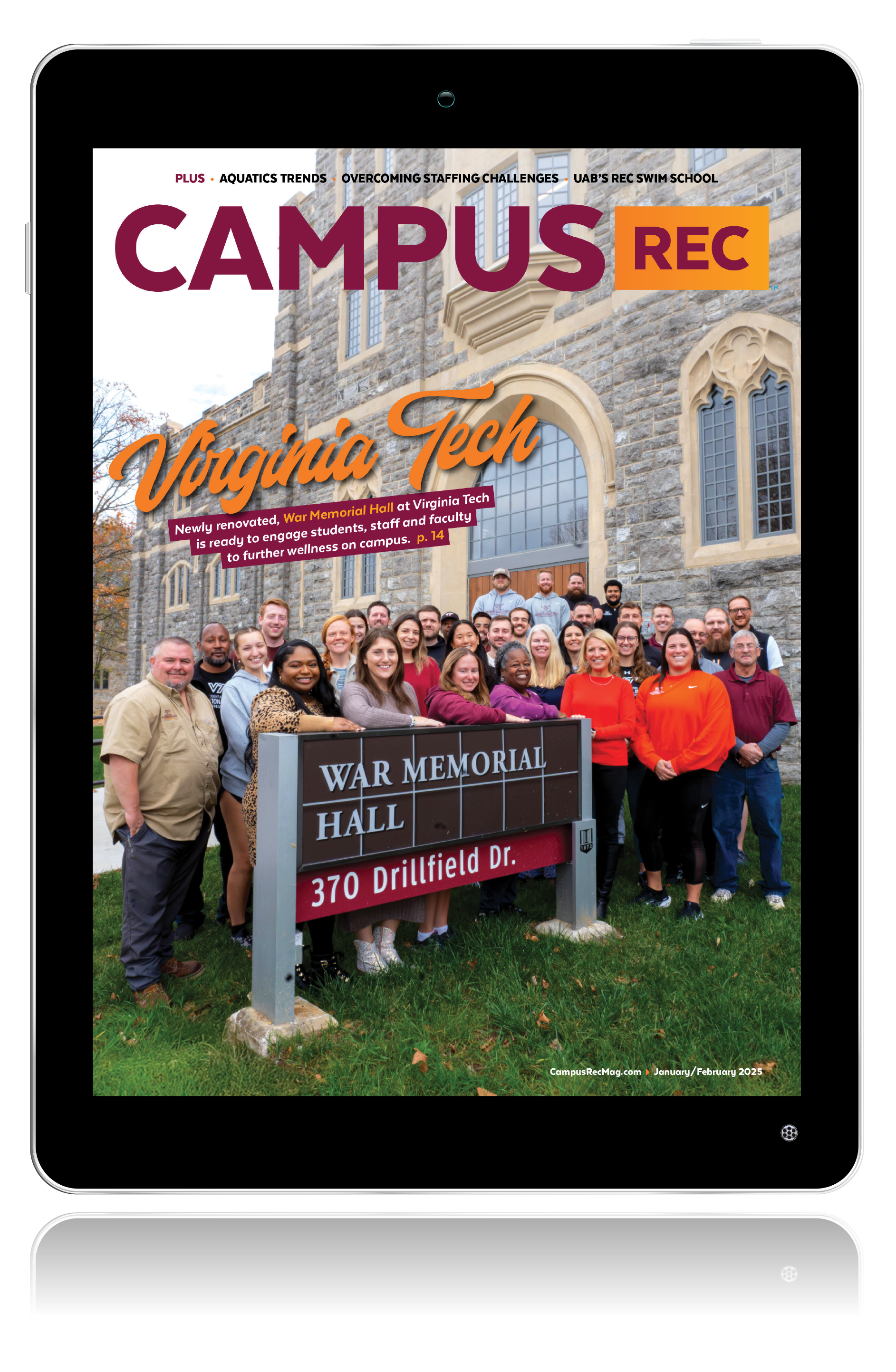Campus Rec Magazine recently surveyed its advisory board on the industry’s top trends, biggest challenges and upcoming opportunities for campus recreation as we enter the first quarter of 2022. The following is a state of the industry report from their insights.
Top Trends
- Holistic recreation and well-being
- Recruiting full-time staff and salaries/Great Resignation
- Student employment and wages
- Increasing and expanding outdoor rec
- Mental health
- Post-pandemic operations
- Strength training demands
- Flex spaces in facility
- Remote work
- Diversity, equity and inclusion
- Esports
The industry is shifting further and further toward the wellness track. Recreation departments across the country are finding new ways to collaborate, for instance. Plus, health and well-being is becoming part of the narrative on campuses as a whole.
Two prime examples include The Oasis at California State University, Northridge and The WELL at California State University, Sacramento State.
Also, conversations continuing around diversity, equity and inclusion are a must for the coming year. And esports is only growing more prominent.
However, the Great Resignation is impacting the industry on the other end of the spectrum. “Lots of staff are leaving the profession,” said Eric Hawkes, the executive director of Wellness and Recreation at North Carolina State University. “How does this impact our future work?”
With less people and tight budgets, the question has become: What does the new normal look like?
Biggest Challenges
- Staffing — student and professional
- Funding/budgets
- Rethinking campus recreation, especially after the pandemic
- Supply chain issues
- Managing/developing workplace culture and remote work
- Declining enrollment
- Burnout/disenchantment with higher ed
- Increasing student wage
As seen by many, declining enrollment over the past couple years has been a reality for schools across the nation.
“Most states are seeing significant declines in student enrollment which impacts campus budgets and then ultimately impacts campus recreation budgets,” said Scott Haines, the director for Campus Recreation at SUNY Brockport.
Plus, tight budgets and staffing challenges are further hurdles in the industry.
“Significant increases in student wage — influenced by rising minimum wage levels — is a current challenge many states are addressing,” said Eric Nickel, the director of University Recreation at James Madison University. “In our case, a 110% increase is happening over five years, more than doubling our budget requirement.”
Biggest Opportunities
- Esports
- Doing less better
- Reinventing campus recreation
- Telling the story because campus recreation is vital
- Engaging faculty and staff members
- Be a major player in impacting students
- “We are more than rec” meaning health and well-being
While the challenges are many, so are the opportunities. COVID-19 has forced the industry to change. “We have the opportunity to reinvent ourselves due to the pandemic,” said Felicia Tittle, the executive director of Recreation and Physical Education at Duke University.
And it’s up the industry to ask the right questions to make the correct adjustments.
“Trends and challenges create opportunities — we need to use data to assess how our communities have changed, how the needs have changed and then develop plans to address these changes through our programs and services,” said Tim Moore, the executive director at Boston University. “This means potentially rethinking and adjusting everything in a very uncertain environment.”
What did you think of this state of the industry report? Do you agree with the predictions? Email your thoughts to heather@peakemedia.com.










